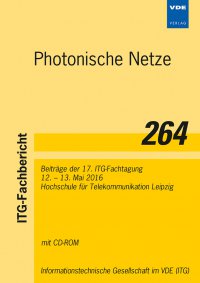Optimizing Discrete Multi-tone Transmission for 400G Data Center Interconnects
Konferenz: Photonische Netze - 17. ITG-Fachtagung
12.05.2016 - 13.05.2016 in Leipzig, Deutschland
Tagungsband: Photonische Netze
Seiten: 6Sprache: EnglischTyp: PDF
Persönliche VDE-Mitglieder erhalten auf diesen Artikel 10% Rabatt
Autoren:
Dochhan, Annika; Eiselt, Michael (ADVA Optical Networking SE, Maerzenquelle 1-3, 98617 Meiningen, Germany)
Griesser, Helmut; Elbers, Joerg-Peter (ADVA Optical Networking SE, Fraunhoferstr. 9a, 82152 Martinsried / Munich, Germany)
Eiselt, Nicklas (ADVA Optical Networking SE, Maerzenquelle 1-3, 98617 Meiningen, Germany & Technical University of Denmark (DTU), Department of Photonics Engineering, DK)
Inhalt:
Discrete multi-tone transmission (DMT) is a promising candidate for future 400G data center interconnects. Eight channels, each carrying 56 Gb/s of data can be combined in a 50-GHz channel grid to form a 400 Gb/s superchannel. For a fully loaded 96 channel DWDM system this leads to a total capacity of 4.8 Tb/s. To meet the requirements of the targeted application in terms of cost efficiency and low power consumption, it is important to keep the complexity for the digital signal processing as low as possible. For DMT, the complexity is mainly determined by the length of the fast Fourier transformation (FFT). Since data center interconnects only have to bridge a distance of typically 80 km, we here investigate among other parameters the influence of the FFT length among other parameters on the achievable performance for 56 Gb/s DMT only for this distance. Transmission is performed in C-band to enable DWDM and no optical dispersion compensation is applied. We consider double sideband (DSB) as well as vestigial sideband (VSB) DMT. It can be seen that an FFT length of 128 is sufficient to reach the required performance in terms of bit error ratio, however, a higher length can significantly improve the performance.


